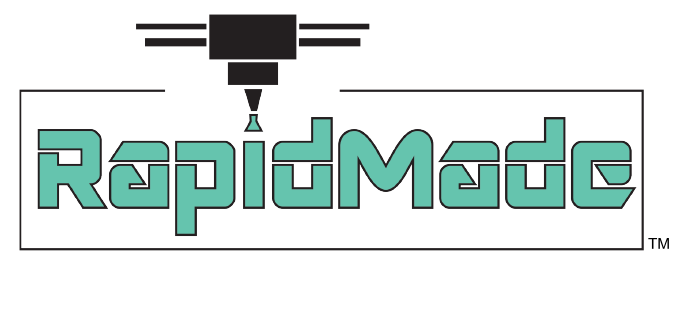First, a quick introduction to MJF and SLS:
Both technologies are industrial 3D printing processes used to produce functional thermoplastic parts from a powder build bed. The bed heats up to just below the melting point of the plastic. The powder is spread layer by layer before it is selectively melted into the net shape with heat and energy. With SLS the source of energy is a laser beam while with Jet fusion it is a catalytic fusing agent. Jet fusion also lays down a detailing agent which prevents fusing in order to achieve more defined edges where you do not want the powder to melt. These two technologies are the top two choices for most industrial customers when they want end-use mechanical parts.
What Materials Are Used?
Both technologies work with a wide range of thermoplastics including, Nylon 12, Nylon 11, Glass-filled Nylon, TPU (Thermoplastic Urethane), and Polypropylene.
What accuracy is achieved?
Both technologies print with similar accuracy: +/-0.012” or +/-0.2%, whichever is greater.
Why Should You Use Multi Jet Fusion?
Speed and Cost - The Jet Fusion uses 3 print heads to lay down fusing and detailing agent. That means it is printing a full layer at a time compared to SLS which uses a single laser to “draw” your part line by line. Because of that an SLS machine prints at a much slower speed. Jet fusion also has more control over build cooling allowing more build cycles of parts within a week of production. That allows manufacturers more flexibility to ship rush orders faster and get more parts out in a week. Because time is money and these machines are expensive, that helps vastly drive down the cost of parts. Those two purely economic reasons alone are the main two reasons any customer would select a 3D process. They want parts as fast as possible for the lowest cost possible. Jet Fusion truly is a market leading technology when it comes to speed and cost, not just compared to SLS but compared to every other print technology.
Density and mechanical properties - The bed of powder that the two technologies print in is not fully dense. The powder has air mixed into it - it’s powder! When SLS melts the plastic the air remains in the part which is ultimately a lower density than if it were injection molded. With Jet fusion, that empty space is filled in with a liquid fusing agent creating a part with zero porosity - a fully dense part. Because Jet Fusion parts are fully dense, they have better mechanical properties than lower density SLS parts.
Detail and Surface finish - Both technologies print with 0.004” layers and have the same Z resolution, but on the XY plane MJF greatly outshines SLS. SLS prints with a 0.030” wide laser. That means the thinnest feature SLS can make is 0.030” thick. The dies on a Jet Fusion print head are only 0.0015” wide meaning it can print much finer detail than an SLS machine. Although we don’t recommend walls thinner than 0.020” for the mechanical properties being too brittle to survive handling and post-processing, that detail allows for very fine surface textures and details on the surface of a part. Jet Fusion does an amazing job with textures in general, like haircell, wood grain, or leather. Additionally, the detailing agent creates a barrier between your part and the unfused powder giving a better surface finish. That barrier does not exist on SLS so powder on the edge of your part will partially fuse to the surface, creating a much rougher texture.
Why Should You Use Selective Laser Sintering?
Color - The big drawback to Jet Fusion is the color. The fusing agent is black which gives parts a natural grey color. SLS does not use a fusing agent so the parts are naturally white. Some customers really desire a white color. Additionally, the white color can be easily dyed any other color. Dying grey colors gives you an inconsistent or muted color. Both technologies can do jet black just fine.
Size - The medium-sized SLS machine is about the same size as an MJF machine but the largest SLS machine is a whopping 28” x 22” x 14”. Although parts can be split and bonded to print larger than the 15” x 11.2” x 15” of a Jet Fusion printer, if you need your part printed in one piece and it is very large, SLS may be your only option. Parts that large via SLS will cost thousands of dollars and their accuracy might be fairly low due to the 0.2% tolerance of the process. Large SLS parts usually only make sense for 1 off prototypes before you build tooling to make the part more cost-effective.
Finding The Ideal Partner in MJF
Finding a capable 3D printing partner can help you save costs and increase production quickly. This is where RapidMade comes into play. RapidMade excels in all areas of 3D printing and thermoplastics. With RapidMade, you will be able to produce durable and clean-looking products at a fraction of the time and cost of SLS. With the HP Multi Jet Fusion, RapidMade allows you to break free from the constraints of traditional molds. The experts at RapidMade are standing by to help. Know what you’re looking for already? Request an instant quote now!

